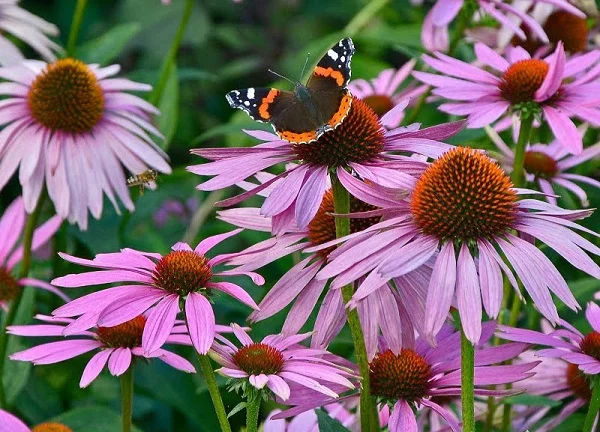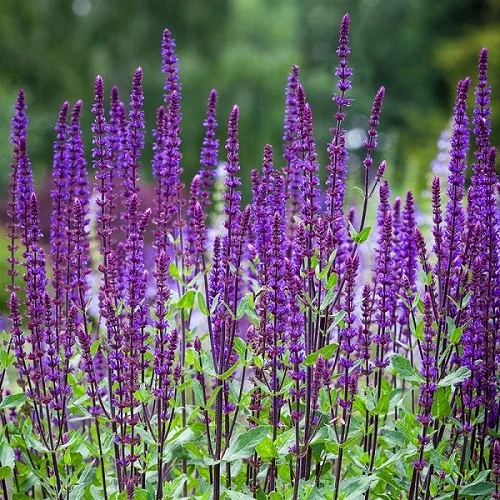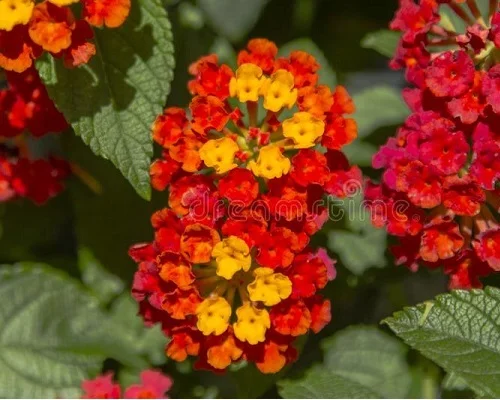How to Grow and Care for Lavender Plants | Lavandula Species Care
Some links in this post may be affiliate links
Lavender Plants are easy-care, drought-tolerant, herbaceous plants which bear silvery-green foliage and upright flower spikes of purple flowers which have a calming, balsam-like fragrance.
Lavandula species are flowering plants belonging to the Lamiaceae (Mint) family. There are about 47 Lavandula species. Most of which are aromatic in all parts and include culinary herbs like basil, mint, lavender, rosemary, sage, savory, marjoram, oregano, hyssop, thyme among others and medicinal herbs like catnip, salvia, bee balm, wild dagga among others.
Lavender plants are grown as ornamental plants, culinary herbs and for extraction of essential oils. Lavender's essential oils have been used over the centuries in cosmetics and traditional medicine.
The common name. 'Lavender', is in reference to the color of flowers which range from light shade of purple to violet. The botanic name, 'Lavandula', is thought to be derived from Old French, 'lavandre' but ultimately from Latin, 'lavare' from lavo (to wash) in reference to the use of blue infusions of the plants to wash the body and the spirit.
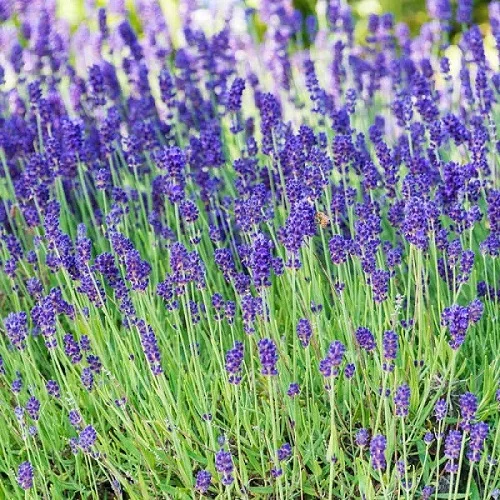
Botanical name: Lavandula
Family: Lamiaceae
Common names: Lavender Plant
Origin
Lavender Plants are native to the Old World (Afro-Eurosia) which includes Europe, northern and eastern Africa, the Mediterranean and southwest Asia to India.
Size
Popular Lavender Plants size ranges from 2-3 feet tall and 2-4 feet wide. They are fast growing plants whose vigour declines with age and can last upto 10 years after which they need to be replaced.
Flowers
The inflorescence in Lavenders are upright spikes of purple flowers which appear from early summer into fall. They are attract butterflies and bees.
Varieties
There are many varieties and cultivars of Lavender Plants in cultivation. Lavenders are ideal for USDA Zones 5-8. Some of the most common Lavender Plants include;
Lavandula angustifolia formerly Lavandula officinalis (Lavender, English Lavender or Common Lavender) which is native to the Mediterranean (Spain, France, Italy, Croatia). It is a strongly aromatic shrub whose flowers are pinkish-purple (lavender-coloured), borne on 1-3 inches long spikes at the top of slender, leafless stems.
It has has several cultivars like 'Munstead', 'Hidcote', 'Miss Katherine' and 'Jean Davis' among others.
Lavandula stoechas (Spanish Lavender or Topped Lavender) which is native to several Mediterranean countries, including France, Spain, Portugal, Italy, Turkey and Greece. It bears fragrant, dark purple flowers.
Lavandula dentata (Fringed Lavender or French Lavender) which is native to the Mediterranean, the Atlantic Islands and the Arabian Peninsula. The inflorescence are long-lasting, narrow spikes of purple flowers, topped with pale violet bracts.
Lavandula multifida (Fernleaf Lavender or Egyptian Lavender) which is a small shrub, native to the southern regions of the Mediterranean, including Iberia, Sicily, Northwest Africa and the Canary Islands. The inflorescence are dark blue or blue violet flowers borne on long stems held above the foliage.
Lavandula × intermedia (Lavandin or Dutch Lavender) which has cultivars like 'Provence' (popular for drying - highly fragrant), 'Phenomenal' (highly tolerant to heat and humidity) and 'Grosso' (highly disease-resistant).
Some Lavandula species have become invasive. Lavandula stoechas has become a cause for concern in Australia where it occurs widely throughout the continent and has been declared a noxious weed in Victoria since 1920. It is also regarded as a weed in parts of Spain.
Toxicity
Lavender Plants are toxic to pets like cats and dogs. Lavandula Species are deer resistant due to the fragrant flowers.
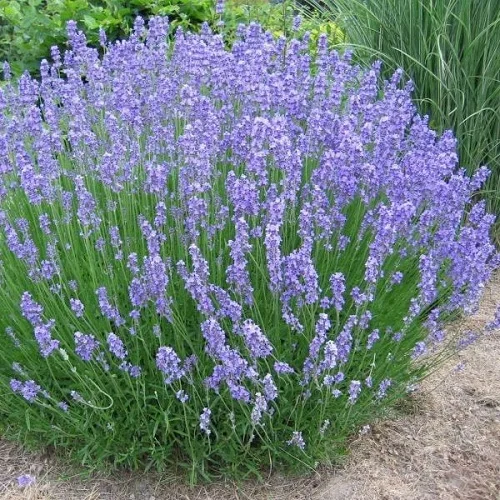
Lavender Plant Care
Lavender Plants (Lavandula Species) thrive in full sun with at least 6-8 hours of sunshine per day, warm soil conditions and loose, fast-draining soil that is low in organic matter to enhance flowering.
Lavandula Species cannot tolerate excessively humid conditions due to fungal infestations. Pruning is necessary to keep the plant neat, to control growth, to encourage flowering and to minimize pest and disease infestations as it improves aeration.
Lavenders can be planted in the ground or in containers (pots). Keep reading for more on these growing conditions and how to provide them.
Light Requirements
Lavender Plants require full sun with at least 6-8 hours of sunshine per day through out the growing season and a sunny window with 6-8 hours of direct sunshine daily in winter for the container-grown plants.
Avoid shaded conditions where the plants will be overshadowed by tall buildings, trees or other large plants as they require full sun for the growth of the fragrant-loaded flowers.
Water Requirements
Lavandula Species do not like overwatering and soggy soil as it can result in fungal disease and root rot disease. In the first growing season after planting, water the young plants regularly to maintain the soil moist until the plants are well established.
Once established, Lavenders are fairly drought-tolerant and will not require very frequent watering. Water the established Lavender Plants deeply during the growing season when the top 2-3 inches of soil dry out. Take care not to wet the foliage to avoid fungal diseases.
For container-grown Lavender Plants, ensure that the pot has a drainage hole and the soil is fast-draining to prevent the plant from sitting in soggy soil which can result in rotting and death of the plant. Decrease watering in the cold period as growth is reduced at this time, thus, the plant does not need much water for growth.
Temperature
Lavender Plants can withstand a wide range of temperatures but they cannot tolerate cold drafts. Therefore, protect the plants from cold drafts. You may grow the plants adjacent a stone or brick wall for additional warmth as exposure to drafts can cause leaf drop and eventual death of the plant.
To keep the soil warm in winter, apply a mulch of dry vegetation on the soil surface but take care not to let the mulch come into contact with the stem to prevent rotting.
Humidity
Lavender Plant cannot tolerate excessively humid conditions as they are prone to fungal infestations. To prevent high humidity, avoid overdamp soil conditions in the cold season (winter) and maintain the plants well pruned and properly spaced in summer to ensure good air circulation.
Fertilizer (Feeding)
Lavenders are not heavy feeders. At planting time, incorporate a handful of manure into the planting hole. This should be adequate for these plants and no more feeding may be required. Excessive feeding may reduce the potency of the plants and may result in vegetative growth at the expense of flower production.
Soil
The best soil for Lavender Plant should be coarse, low in organic matter and one that drains easily to prevent it from holding excess water. The soil should be loose enough to allow water to drain out quickly.
Lavenders prefer a slightly alkaline PH btween 6.5 -7.3. If the soil is too acidic add lime as acidic soil can lead to the death of the plant.
It is advisable to add sand and gravel to the soil to enhance drainage, as Lavenders cannot withstand soggy soil. They cannot grow in clay and compacted soils as the plants are prone to root-rot brought about by soggy soil.
However, this can be solved by planting the plants in a raised bed, ridge or a mound in fast draining soil to enhance drainage.
Where to Buy Lavender Plants
Lavender Plants are readily available from Garden Centres at the beginning of spring. Below are our recommendations.
- You may acquire Lavender Plants online from Etsy (Link to Etsy)
- You may purchase Lavender Plants from Amazon (Link to Amazon)
Where to Plant Lavender Plants
Plant Lavender along walkways and garden paths to enjoy the fragrance as you take a walk. Being a fragrant plant, it is perfect for a herb garden. It can also be planted as a hedge, in borders along fences and garden walls The plants can also be planted near porches and patios as an insect repellent for mosquitoes, flies and fleas among others.
When to Plant Lavender in the Ground
The best time to plant Lavender in the ground is in spring after the risk of frost has passed and the soil has warmed up to about 150C. In the warm climates, it can be planted at any time during the year.
Planting Lavender in the Ground
Dig up the soil to a depth of about 18 inches to loosen it and get rid of all the weeds and other debris from the soil. Make sure that the soil is free-draining by incorporating some sand and gravel.
If the soil is clay or compacted, prepare a raised bed, ridge or mound about 10-12 inches high with loose, free-draining soil that is poor in organic matter.
Prepare planting holes slightly wider than the rootballs at a spacing of 12-18 inches. Incorporate a handful of fully decomposed organic manure per hole.
Plant the Lavender Plants at the same depth as they were in their pot. Firm the soil around the root ball lightly.
Thoroughly water the plants and maintain the soil moist until the plants are well established. Thereafter, water when the top 2-3 inches of soil dry out during the growing season but decrease watering in the cold season.
Repotting Container-grown Lavender
Where the conditions are not favourable for growing Lavender in the ground like in areas with harsh winters, you can grow the plants in containers.
Doing so allows you to move the plants to sunny spots during summer for the much needed sunlight and indoors next to a sunny window when the conditions are harsh in winter.
Repot Lavender Plant at the beginning of the growing season (spring). Use a pot that is 1-2 sizes larger than the current one to avoid overpotting and retention of excess moisture.
Several Lavender Plants can be potted in one large large container. Allow a space of 12-18 in. between plants to avoid overcrowding as it can lead to fungal diseases.
Make sure that the container(s) or pot(s) has a drainage hole to prevent the soil from getting soggy to prevent root-rot and eventual loss of the plant(s).
Select a clay or terracotta pot rather than a plastic or ceramic pot as a clay pot is porous and allows the soil to dry out faster to keep it from staying wet for too long.
Slip the Lavender Plant out of its pot and place it in the center of the new pot at the same soil level as it was in the previous pot and back fill with fresh, loose, fast-draining soil.
Do not fill the pot completely but allow a space of about 1 inch from the rim for watering purposes to avoid spillage.
Wet the soil thoroughly until water comes out through the drainage hole(s). Thereafter, water deeply during the growing season (summer) when the top 2-3 inches of soil dry out. Reduce watering in the cold season (winter).
Pruning Lavender
Pruning Lavender Plant involves cutting back the plants in spring by about 1/3-1/2 to encourage repeat blooming. Cutting back promotes new growth from which the flower buds emerge.
In climates where the plants dieback in winter, cutback when new growth emerges at the base of the plant.
Remove spent flower stalks to keep the plant neat and tidy and also discourage pest and disease infestations.
To enhance air circulation and thereby minimize fungal diseases, prune some branches as needed but ensure to keep the plant well-balanced and attractive.
Be careful not to cutback into the woody stems as they do not break into fresh growth but always retain some new growth on the stems as this is where fresh growth with come from.
Propagation
Lavender Plant (Lavandula spp) can be propagated from softwood cuttings at the beginning of the growing season (spring) or from hardwood cuttings in fall.
How to propagate Lavender Plant from cuttings
Take 3-5 inches softwood (shoot) cuttings from a healthy Lavender Plant or cut a 3-5 inches hardwood cutting just below a leaf node.
Strip off the leaves from the lower 2-3 inches of the stem and scrape off the skin from the bottom of the cutting on one side.
Dip the lower end in a rooting hormone to hasten rooting. Insert the cutting in moist, free-draining, rooting soil in a small pot (about 4 inches wide) and lightly firm the soil around the cutting.
Cover the set up with a clear plastic bag to create a greehouse effect (increase humidity and warmth) to fasten rooting.
Place the set up in a well-lit, warm place away from direct sunlight to avoid cooking the plants.
Maintain the soil slightly moist until the stem cuttings have rooted. Rooting may take upto 2-4 weeks for the softwood cuttings but the hardwood cuttings may take longer.
Tug at the cuttings a little, any resistance indicates rooting has occurred. Once rooted, remove the plastic cover.
Place the rooted cuttings in a sunny spot and feed weekly with a liquid fertilizer diluted to 1/4 strength.
Transplant the new Lavandula Plants outdoors after 2-3 weeks into standard potting soil.
How to Dry Lavender Flowers
Harvest the flowers in the morning as this is when the oils are most concentrated. Cut the flower stems as long as possible before the buds are fully opened as the essential oils are most potent at this time.
Tie the stems in bundles and hang them upside down in a dark, well-ventillated place to preserve the color as well as keep the stems from molding. Once dried, shake the stems gently into a jar to detach the the flowers, close it tightly and store in a cool, dark place.
Uses of Lavender
Place the dried flowers in satchets and share with friends (gifts) or use them to keep clothings smelling fresh and also repel insects. You can also place a satchet in the pillow to promote sleep.
Fresh or dried buds and leaves can be used for culinary purposes to garnish a salad, infuse teas and cocktails, marinate meat, flavour sauces, cakes and salts, in potpourri among others.
Companion Plants
Lavenders create a beautiful spectacle when grown together with Coneflower, Black-eyed Susan, Sedum, Roses, Shasta Daises among others.
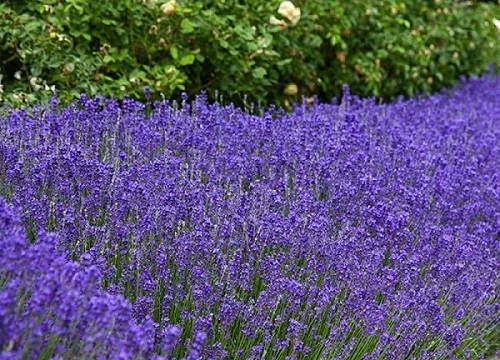
Lavender Plants Problems
Lavender Plants (Lavandula spp) problems include lack of blooms, leaf drop, yellowing leaves, bad smell, pests and diseases among others. Keep reading for more on these problems and how to fix them.
Lack of blooms
Lack of blooms in Lavender Plants is caused by three possible reasons. One possible reason for lack of blooms in Lavender is too fertile soil or overfeeding.
Lavenders are not heavy feeders, therefore, they do not need regular feeding neither fertile soils. They do best in soils that are poor in organic matter. Add sand and gravel to the soil to reduce the organic matter per unit of soil.
The second possible reason for lack of blooms in Lavender Plants is too little light. Position the plant in a sunny spot and ensure that it will receive 6-8 hours of direct sunlight per day.
The third possible reason for lack of blooms in Lavender Plants is failure to prune (cutback) the plant. Cutback the plant annually in spring to encourage new growth as flower buds emerge from the new growth.
Leaf drop
Leaf drop (dropping leaves) in Lavender Plant are due to underwatering during the growing season. Water the plant thoroughly when the top 2-3 inches of soil dry out and do not allow it to dry out completely for a prolonged period of time.
Yellow Leaves
Yellow leaves in Lavender Plant are due to overwatering in the cold season season. Reduce watering in the cold season as growth is reduced at this time, therefore, the plant does not require a lot of water for growth.
Pests
Common pests in Lavender Plant are aphids, thrips. spider mites, whiteflies, root nematodes, leafhoppers and spittlebugs. Spray the plant with an insecticidal soap or neem oil to get rid of the pests. Ensure to follow the manufacturer's recommendations.
Diseases
Lavender Plants are also prone to other plant diseases like Fusarium Wilt which causes wilting, yellow leaves, poor flowering, stunting and death of the plant. Uproot and destroy the affected plant. Dig up the surrounding soil and discard it to minimize spread of the disease to the rest of the plants. Practise rotation every 3-5 years.
Another common disease in Lavender is Crown and Stem Rot which causes leaf discoloration, wilting and dieback, stunted growth and oozing cankers near the base. Uproot and destroy the affected plant. Dig up the surrounding soil and discard it. Do not overwater and avoid soggy soil. Keep the soil surface free of plant debris.
Leaf spots
Leaf spots in Lavender Plant are an indication of leaf spot disease which is prevalent in poorly aerated, overdamp conditions. Do not overwater the plants or let them sit in soggy soil. Ensure that the soil is free-draining and water only when the top 2-3 inches of soil has dried out.
For container-grown Lavender Plants, make sure that the container has adequate drainage holes and the soil is loose and drains easily. Avoid overcrowding of the plants and also prune some of the branches to improve the ventilation and ensure that there is good air circulation at all times.
Bad Smell
Bad smell in Lavender Plants is a characteristic of root-rot disease which is prevalent in container-grown plants and is brought about by soggy soil due to poor drainage.
Take out the plant from its pot and inspect the roots. Mushy brown-black roots are indicative of root-rot. Cut away the infected roots. Spray the healthy roots and the entire plant with a fungicidal solution.
Repot the plant in a fresh pot and fresh, well-drained soil. Ensure that the pot has adequate drainage holes. Position the plant in a sunny spot. Do not water and keep the soil dry for a few days.
You liked it? Share on social media.
Related Content
Amazon Associates Disclosure
Homeplantsguide.com is a participant in the Amazon Services LLC Associates Program, an affiliate advertising program designed to provide a means for sites to earn advertising fees by advertising and linking to amazon.com.
